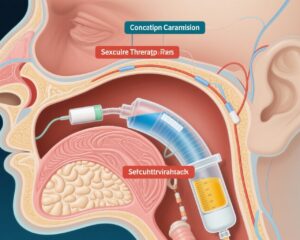Highlight
– Long-term follow-up of 1202 multiple myeloma patients treated under early total therapy protocols demonstrated significant survival improvements.
– Incorporation of immunomodulatory drugs and proteasome inhibitors alongside tandem hematopoietic stem cell transplant increased 10-year progression-free survival from 9% to 44%.
– Median overall survival reached approximately 12 years in the most recent TT 3A protocol, with 15-year survival rates up to 40%.
– Low-risk gene expression profiling identified patients with even better long-term outcomes.
Study Background and Disease Burden
Multiple myeloma (MM) is a hematologic malignancy characterized by clonal proliferation of plasma cells in the bone marrow, leading to significant morbidity and mortality. Despite therapeutic advances, MM remains largely incurable, with most patients experiencing relapse after initial responses. Historically, long-term follow-up data from clinical trials evaluating intensive therapies have been limited, restricting insights into cure fractions and survival durability. Early attempts to improve outcomes involved total therapy (TT) protocols that combined aggressive chemotherapy, tandem autologous hematopoietic stem cell transplantation (HSCT), and later integration of novel agents such as immunomodulatory drugs (IMiDs) and proteasome inhibitors (PIs). Understanding the long-term efficacy of these approaches is crucial to inform therapy optimization and development.
Study Design
This secondary analysis pooled data from three clinical trials conducted at the University of Arkansas for Medical Sciences: TT 1 (phase 2 single-arm trial, 1989–1995), TT 2 (phase 3 randomized trial, 1998–2004), and TT 3A (phase 2 single-arm trial, 2004–2006). A total of 1202 newly diagnosed patients with MM were enrolled. Treatments combined combinational chemotherapy, tandem HSCT, and incorporated thalidomide and lenalidomide (IMiDs) plus bortezomib (PI) in later protocols. The primary endpoints included progression-free survival (PFS) and overall survival (OS), with median follow-up of 16.6 years. Secondary analyses evaluated survival among risk-defined subgroups using low-risk gene expression profiling and compared relative survival and excess mortality across protocols.
Key Findings
The analysis revealed remarkable improvements in long-term outcomes with sequential refinements in therapy.
– Ten-year PFS increased significantly from 9% in TT 1 to 44% in TT 3A, indicating better disease control.
– Median OS improved across protocols; for TT 3A, median OS was approximately 12 years (95% CI, 10.7-13.6), a marked extension compared with earlier cohorts.
– Fifteen-year OS rates rose from 24% in TT 1 to 40% in TT 3A, and median 20-year OS for TT 2 (arm A, thalidomide arm) was 24% (95% CI, 19.3%-30.8%).
– Patients categorized as standard-risk by gene expression profiling experienced even better survival, with median 20-year OS of 30% in TT 2 (arm A) and 15-year OS of 45% in TT 3A.
– Relative survival rates normalized sooner, reaching near baseline mortality risk at 5–10 years for TT 2 (arm A) and TT 3A versus 10–15 years for TT 1.
– The relative excess mortality risk reductions were estimated at 23% for TT 2 (arm A), 44% for TT 2 (arm B), and 54% for TT 3A compared to TT 1.
These findings support the hypothesis that a time-limited approach incorporating IMiDs, PIs, and tandem HSCT produces incremental and durable survival benefits.
Expert Commentary
This comprehensive long-term evaluation of TT protocols underscores the cumulative benefit of integrating novel agents and tandem stem cell transplantation in established MM treatment regimens. The data highlight that a subset of patients can achieve sustained remission or functional cure, particularly those with favorable molecular profiles. Nevertheless, patients with high-risk disease still face poorer outcomes, emphasizing the need for risk-adapted personalized treatment strategies. Although the TT 3A regimen represents state-of-the-art treatment from the early 2000s, emerging therapies such as monoclonal antibodies, CAR T-cell therapies, and next-generation small molecules warrant evaluation in long-term contexts. Limitations of these analyses include single-center data and evolving supportive care over decades, which may affect generalizability.
Conclusion
This secondary analysis of three clinical trials firmly supports that early total therapy protocols combining chemotherapy, tandem hematopoietic stem cell transplant, and incorporation of immunomodulatory and proteasome inhibitor drugs markedly improve long-term survival in multiple myeloma. Approximately one-third to one-half of patients treated with these approaches survive beyond 15 to 20 years from diagnosis, with superior outcomes in standard-risk molecular groups. These findings provide a benchmark for assessing the durability of new therapies and reinforce the continued importance of risk stratification and tailored treatment. Future large-scale studies are essential to establish the long-term efficacy and safety of next-generation agents and cellular immunotherapies in multiple myeloma.
References
1. Al Hadidi S, Ababneh OE, Schinke CD, et al. Long-Term Follow-Up of Patients With Multiple Myeloma Treated on Earlier Total Therapy Protocols: A Secondary Analysis of 3 Clinical Trials. JAMA Oncol. 2025;11(8):910-915. doi:10.1001/jamaoncol.2025.1394
2. Rajkumar SV. Multiple myeloma: 2020 update on diagnosis, risk-stratification, and management. Am J Hematol. 2020;95(5):548-567.
3. Kumar S, Paiva B, Anderson KC, et al. International Myeloma Working Group consensus criteria for response and minimal residual disease assessment in multiple myeloma. Lancet Oncol. 2016;17(8):e328-e346.
4. Sonneveld P, Broijl A. Treatment of relapsed and refractory multiple myeloma. Haematologica. 2016;101(4):396-406.


